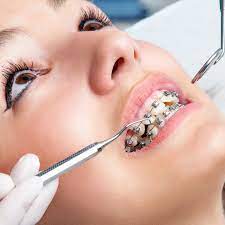The Definitive Guide to Causey Orthodontics
Table of ContentsHow Causey Orthodontics can Save You Time, Stress, and Money.Getting My Causey Orthodontics To WorkCausey Orthodontics for BeginnersThe Best Guide To Causey OrthodonticsThe Best Strategy To Use For Causey Orthodontics
Disregarding occlusal relationships, it was typical to get rid of teeth for a range of dental concerns, such as malalignment or overcrowding. The concept of an undamaged dentition was not extensively appreciated in those days, making bite correlations appear pointless. In the late 1800s, the concept of occlusion was crucial for producing trustworthy prosthetic replacement teeth.As these principles of prosthetic occlusion progressed, it ended up being a very useful device for dental care. It was in 1890 that the job and impact of Dr. Edwards H. Angle started to be felt, with his payment to modern orthodontics especially significant. Focused on prosthodontics, he educated in Pennsylvania and Minnesota before guiding his attention towards oral occlusion and the treatments needed to keep it as a normal condition, hence ending up being recognized as the "daddy of modern-day orthodontics".

The idea of excellent occlusion, as proposed by Angle and integrated right into a category system, made it possible for a change towards treating malocclusion, which is any deviation from regular occlusion. Having a complete set of teeth on both arches was very searched for in orthodontic treatment due to the demand for specific connections between them.
The Main Principles Of Causey Orthodontics
As occlusion ended up being the key concern, face proportions and aesthetic appeals were overlooked - cheapest orthodontist near me. To accomplish excellent occlusals without utilizing exterior pressures, Angle postulated that having excellent occlusion was the ideal method to get maximum facial visual appeals. With the death of time, it came to be quite obvious that also a phenomenal occlusion was not suitable when thought about from a visual perspective
Charles Tweed in America and Raymond Begg in Australia (who both examined under Angle) re-introduced dental care removal right into orthodontics throughout the 1940s and 1950s so they might boost face esthetics while additionally making certain far better security concerning occlusal relationships. In the postwar period, cephalometric radiography started to be used by orthodontists for measuring modifications in tooth and jaw setting triggered by development and therapy. It came to be noticeable that orthodontic treatment might change mandibular growth, bring about the development of practical jaw orthopedics in Europe and extraoral force steps in the US. These days, both functional devices and extraoral gadgets are applied around the world with the goal of amending development patterns and kinds. Pursuing real, or at the very least enhanced, jaw relationships had actually ended up being the main objective of therapy by the mid-20th century.
The Definitive Guide for Causey Orthodontics
 Till the mid-1970s, braces were made by wrapping steel around each tooth. https://1businessworld.com/company/causey-orthodontics/., it became possible to rather bond steel braces to the teeth.
Till the mid-1970s, braces were made by wrapping steel around each tooth. https://1businessworld.com/company/causey-orthodontics/., it became possible to rather bond steel braces to the teeth.This has actually had significant results on orthodontic therapies that are carried out regularly, and these are: 1. Correct interarchal relationships 2. Right crown angulation (pointer) 3.
The benefit of the style depends on its bracket and archwire combination, which needs only minimal wire flexing from the orthodontist or medical professional (cheapest orthodontist near me). It's aptly named after this feature: the angle of the port and density of the bracket base inevitably identify where each tooth is situated with little demand for added control
Examine This Report about Causey Orthodontics
Both of these systems used similar brackets for each and every tooth and required the flexing of an archwire in three aircrafts for finding teeth in their desired placements, with these bends dictating best placements. When it involves orthodontic home appliances, they are divided right into two types: detachable and repaired. Detachable appliances can be tackled and off by the client as called for.

Hence, nearly all modern set home appliances can be thought about variations on this edgewise device system. Early 20th-century orthodontist Edward Angle made a significant contribution to the globe of dentistry. He developed four unique appliance systems that have actually been utilized as the basis for many orthodontic therapies today, barring a couple of exceptions.
The Ultimate Guide To Causey Orthodontics

The cable ended in a string, and to relocate it ahead, an adjustable nut was utilized, which enabled a rise in circumference. By ligation, each individual tooth was affixed to this extensive archwire (orthodontist services). Because of its limited array of movement, Angle was not able to achieve specific tooth positioning with an E-arch
These tubes held a firm pin, which could be rearranged at each visit in order to move them in area. Called the "bone-growing device", this device was supposed to motivate much healthier bone growth as a result of its capacity for moving force straight to the roots. Executing it proved bothersome in reality.